This designated outdoor area facilitates recreational combat simulations. Participants utilize airsoft guns, replicas of firearms that discharge plastic projectiles, in a tactical environment. The setting typically incorporates diverse terrain features, such as bunkers, buildings, and natural obstacles, to enhance the realism and strategic complexity of the simulated combat scenarios.
Organized airsoft play fosters teamwork, strategic thinking, and physical activity. The experience provides a controlled environment for individuals to engage in competitive scenarios, promoting both physical and mental agility. These areas often serve as social hubs for enthusiasts, building communities around a shared interest in tactical games and simulated military experiences.
The following sections will delve deeper into specific aspects related to these recreational areas, examining safety protocols, game types, equipment standards, and the broader impact on local communities and economies.
Strategic Airsoft Engagement
Effective utilization of any designated airsoft area necessitates a comprehensive understanding of tactical principles and adherence to safety guidelines. Implementing the following recommendations will enhance both the individual and team’s performance while prioritizing participant well-being.
Tip 1: Prioritize Eye Protection: Full-seal goggles that meet or exceed ANSI Z87.1 standards are non-negotiable. Consistent and correct wearing of these goggles is paramount throughout the entirety of play. Compromising on eye protection can lead to severe and irreversible injury.
Tip 2: Understand and Utilize Terrain: Familiarization with the specific layout, including cover points and lines of sight, provides a distinct advantage. Adapt tactics to leverage the environment, utilizing natural and artificial barriers for concealment and strategic positioning.
Tip 3: Communicate Effectively: Clear and concise communication is crucial for coordinating team movements and relaying enemy positions. Pre-determined hand signals or radio protocols can significantly improve team cohesion and situational awareness.
Tip 4: Maintain Equipment Readiness: Regularly inspect airsoft guns, magazines, and tactical gear. Ensure proper functionality and address any potential malfunctions before engaging in play. A well-maintained arsenal contributes to reliability and performance.
Tip 5: Adhere to Designated Rules and Regulations: Compliance with the field’s established rules of engagement, including velocity limits and engagement distances, is mandatory. Failure to adhere to these guidelines jeopardizes the safety of all participants and undermines the integrity of the game.
Tip 6: Practice Responsible Gun Handling: Treat airsoft guns with the same respect afforded to real firearms. Maintain muzzle awareness, keep fingers off the trigger until ready to fire, and never point a weapon at anything that should not be targeted.
Tip 7: Develop Situational Awareness: Continuously scan the surrounding environment, monitoring for potential threats and adjusting strategies accordingly. Proactive observation provides valuable information for anticipating enemy movements and reacting effectively.
Adherence to these guidelines cultivates a safer and more engaging airsoft experience. Prioritizing safety, communication, and tactical awareness will contribute to individual improvement and overall team success within these designated environments.
The subsequent section will explore common scenarios and strategies encountered during airsoft engagements, offering insights into effective approaches for navigating diverse gameplay situations.
1. Safety Regulations Adherence
Strict adherence to safety regulations is paramount within any designated recreational combat simulation area. These protocols mitigate the inherent risks associated with projectile-based activities and ensure the well-being of all participants.
- Mandatory Eye Protection Compliance
The mandatory use of ANSI-rated full-seal goggles is a foundational safety regulation. Consistent application minimizes the risk of eye injuries from projectiles. Non-compliance should result in immediate expulsion from the area.
- Velocity Limit Enforcement
Establishing and strictly enforcing maximum velocity limits for airsoft guns prevents excessive projectile impact force. Chronographs are used to measure projectile velocity, and weapons exceeding stipulated limits are disallowed. Limits vary based on engagement distance and weapon type.
- Minimum Engagement Distance Protocols
Implementing minimum engagement distances reduces the risk of injury from close-range impacts. Specific distances should be designated for various weapon types, with adherence monitored by referees. “Bang-out” rules may also be implemented for extremely close encounters.
- Prohibited Conduct Restrictions
Regulations prohibit unsafe conduct, including blind firing, physical altercations, and the use of unauthorized pyrotechnics. Referees should actively monitor participant behavior and enforce disciplinary measures for violations. Clear communication of these rules is essential.
These safety regulations are integral to responsible operation. Consistent enforcement fosters a secure environment, allowing participants to engage in simulated combat with reduced risk of injury. The effectiveness of these measures directly impacts the overall safety record and reputation of any such venue.
2. Tactical Environment Design
Tactical environment design is a critical component influencing gameplay dynamics and strategic decision-making within a designated airsoft area. The deliberate arrangement of terrain features, structures, and obstacles shapes engagement opportunities and impacts the overall realism of simulated combat scenarios.
- Cover and Concealment Placement
Strategic placement of cover, such as bunkers, barricades, and natural formations, dictates movement patterns and engagement ranges. Ample cover encourages tactical advancement and flank maneuvers, while limited cover forces players to utilize smoke grenades or suppressive fire to progress. The density and distribution of cover directly affect the pace and intensity of gameplay.
- Lane of Fire Management
Lane of fire management involves controlling lines of sight to create chokepoints or defensive positions. Narrow corridors, fortified structures, and elevated platforms can be strategically positioned to funnel enemy movement and provide advantageous firing angles. Conversely, open areas expose players to increased risk, necessitating careful coordination and teamwork.
- Objective Placement and Accessibility
The placement of objectives, such as capture points or bomb sites, dictates the focal points of engagement. Objective locations should be strategically positioned to require balanced offensive and defensive tactics. Easily accessible objectives may encourage rushed attacks, while heavily fortified objectives necessitate coordinated assaults and specialized equipment.
- Terrain Variation and Complexity
Varying terrain features, including hills, trenches, and wooded areas, add complexity to tactical scenarios. Elevated terrain provides advantageous firing positions, while trenches offer concealment and avenues for infiltration. A diverse landscape promotes adaptability and requires players to master a range of tactical skills.
The interplay of these elements directly impacts the strategic depth and replayability of a designated airsoft venue. A well-designed tactical environment fosters engaging gameplay, encourages creative problem-solving, and enhances the overall participant experience. Conversely, a poorly designed environment can lead to stagnant gameplay, unfair advantages, and a diminished sense of realism.
3. Equipment Standards Compliance
Within the context of any designated recreational combat simulation area, strict adherence to equipment standards is not merely a recommendation but a fundamental prerequisite for safe and equitable participation. These standards, encompassing velocity limits, protective gear requirements, and weapon classifications, directly mitigate the potential for injury and ensure a level playing field. The absence of robust equipment standards compliance poses a significant threat to participant well-being and undermines the integrity of simulated combat engagements. A concrete example can be found in scenarios involving unregulated projectile velocities; exceeding established limits drastically increases the risk of eye trauma, lacerations, and blunt-force injuries.
The practical significance of equipment standards compliance extends beyond immediate safety concerns. Consistent enforcement fosters a culture of responsibility and respect among participants, promoting ethical gameplay and discouraging reckless behavior. Moreover, adherence to recognized industry standards enhances the credibility and reputation of the recreational venue. For instance, many reputable areas implement mandatory chronograph testing to verify that airsoft guns conform to established velocity limits. Weapons that fail to meet these specifications are prohibited from use, thereby minimizing the potential for accidental injuries. Furthermore, the implementation of clear guidelines regarding the acceptable types of protective gear, such as full-seal goggles and face protection, provides a critical layer of defense against projectile impacts.
In summary, equipment standards compliance is an indispensable element of a successful and safe recreational combat simulation environment. Its absence can lead to severe injuries, compromised gameplay integrity, and a diminished reputation. Ongoing vigilance, rigorous enforcement, and continuous refinement of these standards are crucial for maintaining participant safety and ensuring a positive recreational experience.
4. Community Engagement Dynamics
The operational success and long-term viability of any designated airsoft area are inextricably linked to the strength and nature of its community engagement dynamics. This encompasses interactions between participants, facility management, and the broader surrounding community. Positive engagement fosters a sense of ownership, shared responsibility, and mutual benefit, while negative interactions can lead to conflict, diminished participation, and reputational damage. For example, active involvement of local residents in safety briefings or collaborative field maintenance projects can cultivate goodwill and minimize potential opposition to the facility’s presence.
Effective community engagement translates directly into tangible benefits for an airsoft area. Consistent communication regarding safety protocols, scheduled events, and noise mitigation strategies can alleviate concerns among neighboring communities and prevent potential disputes. Organized events, such as charity games or open house days, can attract new participants and generate positive publicity. Furthermore, establishing partnerships with local businesses, such as providing discounts to airsoft participants, fosters economic interdependence and strengthens the community’s vested interest in the facility’s success. Conversely, neglecting community engagement can result in complaints, restrictive regulations, and ultimately, the closure of the facility.
In conclusion, proactive and thoughtful community engagement strategies are not merely ancillary activities but essential components of a sustainable and thriving airsoft area. By prioritizing open communication, collaborative initiatives, and mutual respect, such facilities can establish themselves as valued assets within the broader community, ensuring long-term operational stability and fostering a positive recreational environment for all involved. The challenge lies in maintaining this level of engagement consistently and adapting strategies to meet the evolving needs and concerns of all stakeholders.
5. Organizational Structure Efficiency
Organizational structure efficiency is a critical determinant of operational effectiveness in the context of any designated airsoft area. A streamlined and well-defined organizational framework directly impacts the ability to deliver safe, engaging, and sustainable recreational experiences. Inefficient organizational structures can lead to operational bottlenecks, compromised safety protocols, and diminished participant satisfaction. Therefore, a comprehensive understanding of its components is essential for the successful management of such a facility.
- Clear Hierarchy of Authority
A clearly defined hierarchy of authority establishes lines of communication and accountability, ensuring that responsibilities are appropriately delegated and supervised. Within an airsoft setting, this may involve designated field marshals overseeing gameplay, safety officers enforcing regulations, and administrative staff managing bookings and customer service. Ambiguity in authority can lead to confusion, delayed responses to emergencies, and a lack of consistent enforcement of rules. For example, in the absence of a designated safety officer, velocity checks may be inconsistently performed, increasing the risk of injury.
- Defined Roles and Responsibilities
Each staff member should possess a clearly defined role with specific responsibilities, minimizing duplication of effort and ensuring that all essential tasks are adequately addressed. This may include tasks such as field maintenance, equipment repair, customer registration, and emergency medical response. Overlapping or poorly defined roles can lead to inefficiency and a lack of accountability. For instance, if multiple individuals are responsible for maintaining the field, no one may take ownership of ensuring that hazards are promptly addressed.
- Effective Communication Channels
Establishing clear and reliable communication channels facilitates the rapid dissemination of information between staff members and participants. This may involve the use of radios, mobile devices, or designated communication boards. Inefficient communication can hinder the ability to respond to emergencies, coordinate gameplay scenarios, and address customer concerns. For example, the absence of a reliable radio communication system may delay the response to a player injury on the field.
- Standardized Operating Procedures
Implementing standardized operating procedures (SOPs) ensures consistency in the execution of routine tasks, promoting efficiency and minimizing the potential for errors. This may include SOPs for safety briefings, equipment checks, game start procedures, and emergency protocols. The lack of standardized procedures can lead to inconsistencies in service delivery and increased risk of accidents. For instance, if safety briefings are inconsistently delivered, participants may not be adequately informed of the risks involved and the measures required to mitigate them.
In conclusion, organizational structure efficiency directly correlates with the overall quality and safety of the experience within an airsoft area. By establishing a clear hierarchy of authority, defining roles and responsibilities, implementing effective communication channels, and establishing standardized operating procedures, the facility can maximize its operational effectiveness and ensure a positive and secure recreational environment for all participants. The ongoing assessment and refinement of the organizational structure are essential for adapting to changing conditions and maintaining optimal performance.
Frequently Asked Questions Regarding GSF Airsoft Field
The following section addresses common inquiries concerning operational procedures, safety regulations, and participation guidelines associated with this recreational combat simulation area. Information presented is intended to provide clarity and promote responsible engagement.
Question 1: What specific safety equipment is mandatory for participation at GSF Airsoft Field?
Full-seal goggles meeting ANSI Z87.1 or equivalent international standards are mandatory at all times while on the playing field. Additional protective gear, such as full-face masks or lower-face protection, is strongly recommended, particularly for younger participants. Failure to comply with the mandatory eye protection requirement will result in immediate expulsion.
Question 2: What is the velocity limit for airsoft guns permitted at GSF Airsoft Field?
The maximum permissible velocity for airsoft guns at this venue is 400 feet per second (FPS) with 0.20g BBs. Designated areas utilize chronographs to verify compliance. Weapons exceeding this limit are prohibited. Specific rules may apply for specialized weapon classes (e.g., sniper rifles); consult field staff for clarification.
Question 3: Are pyrotechnics or smoke grenades permitted at GSF Airsoft Field?
The use of pyrotechnics is strictly prohibited due to safety and environmental concerns. Smoke grenades may be permitted, subject to prior approval from field management and adherence to specific usage guidelines. Contact field staff for clarification on permitted smoke grenade types and designated usage zones.
Question 4: What is the minimum engagement distance at GSF Airsoft Field?
A minimum engagement distance of ten (10) feet is enforced to minimize the risk of injury from close-range impacts. For weapons exceeding a specified FPS threshold, a greater minimum engagement distance may be required. “Bang-out” rules, which dictate alternative procedures for extremely close encounters, may also be in effect; consult field staff for details.
Question 5: How are disputes resolved at GSF Airsoft Field?
Designated field marshals are responsible for mediating disputes and enforcing field rules. Participant disputes should be promptly reported to a field marshal for resolution. The field marshal’s decision is final. Unsportsmanlike conduct or failure to comply with marshal instructions will result in disciplinary action, up to and including expulsion from the area.
Question 6: What is the policy regarding refunds or cancellations at GSF Airsoft Field?
Refund and cancellation policies vary depending on the specific event or reservation. Participants should consult the terms and conditions outlined during the registration process for detailed information. Generally, cancellations made within a specified timeframe prior to the event may be eligible for a partial refund. No-shows are typically not eligible for refunds.
Compliance with these guidelines ensures a safer and more enjoyable experience for all participants.
The next section will delve into advanced tactical considerations relevant to engagements within a designated airsoft environment.
GSF Airsoft Field
This exploration has articulated the multi-faceted aspects of gsf airsoft field, emphasizing the significance of safety protocols, tactical environment design, equipment standards compliance, community engagement, and organizational structure efficiency. Each element contributes directly to the overall quality and sustainability of the recreational experience, demanding rigorous adherence to established guidelines and proactive adaptation to evolving challenges.
The continued success of venues like gsf airsoft field hinges on prioritizing participant well-being, fostering a culture of responsibility, and adapting to the evolving landscape of recreational combat simulations. The diligent application of these principles will ensure the long-term viability and positive impact of such spaces within the community. Further, active promotion of these ideals within the broader airsoft community will continue to elevate the quality of play for those engaged.


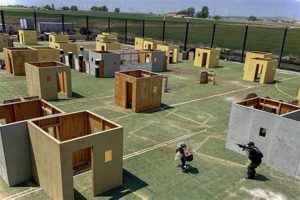
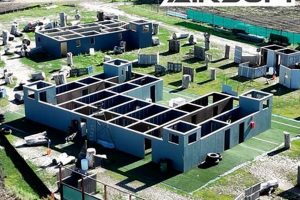
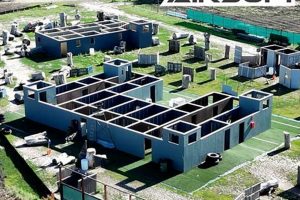
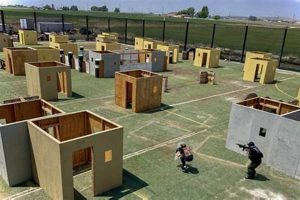
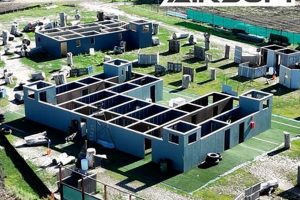
![[Guide] Airsoft Fields Near Me: Find Fun Close By! Ultimate Airsoft Guide for Beginners, Tactics & Gear Reviews [Guide] Airsoft Fields Near Me: Find Fun Close By! | Ultimate Airsoft Guide for Beginners, Tactics & Gear Reviews](https://airsoftica.com/wp-content/uploads/2025/11/th-658-300x200.jpg)